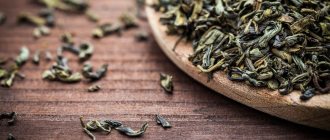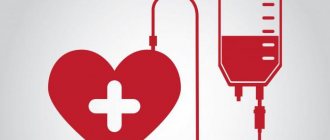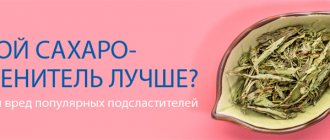Cholesterol. Danger or scam?
Quantity
Once upon a time we had the Great Vitamin Scam, and now here is another medical theory that claims that many people were mistaken before. Here is what Candidate of Medical Sciences, doctor O.I. Sineva writes:
The famous Viennese surgeon and scientist Theodor Billroth (well known for his original operations to remove part of the stomach for peptic ulcer disease) asked his students to conduct an interesting experiment. The thyroid gland was removed from goats and sheep. The result turned out to be completely paradoxical. The operation led to a sharp jump in cholesterol levels and total atherosclerosis of the arteries, incl. coronary
So, herbivores that never ate cholesterol-containing animal foods developed atherosclerosis.
It was suspected that decreased thyroid function could lead to atherosclerosis. Later, these assumptions were confirmed in humans. It is insufficient thyroid function, and not animal fats, that is one of the main causes of atherosclerosis. Since the 19th century, atherosclerosis has been successfully treated with small doses of thyroid hormones.
In the second half of the twentieth century, a theory emerged whose consequences were tantamount to carrying out mass genocide. The birth of the theory that the cause of atherosclerosis is the consumption of cholesterol-containing animal foods was implicated in the selfishness of narrow-minded scientists and the greed of pharmaceutical companies. Many millions of patients with atherosclerosis fell victim to it. Among the victims was US President Dwight Eisenhower, who was put on a low-cholesterol diet by doctors immediately after his first myocardial infarction. Despite the diet, my cholesterol levels continued to rise. The more animal fats were restricted, the higher cholesterol levels rose. Along with cholesterol, weight also increased. The result of improper treatment was sad: the president suffered several more heart attacks, which ultimately led to cardiac death. Presidents are not treated by the most knowledgeable doctors. If President D. White's attending physician had listened to the advice of his knowledgeable colleague B. Barnes, then perhaps the course of history and the direction of scientific research would have taken a completely different path.
Many millions of dollars have been thrown into the furnace of fruitless scientific research in order to confirm the “culpability” of animal fats in the occurrence of atherosclerosis and myocardial infarction. Until today, no real evidence has been provided. However, the general public was not informed about this, and the anti-cholesterol drug Lipitor successfully maintains its sales leadership.
Another remedy could help President Eisenhower lower his cholesterol levels: eliminating “dense” carbohydrates from his diet. It is sweet, starch-rich and refined foods that are the second most important cause of high cholesterol and atherosclerosis of the myocardial arteries.
Meanwhile, the father of physiology, Rudolf Virchow, wrote that cholesterol was never the cause of atherosclerosis, but appears only at the final stage of arterial damage. Cholesterol comes to “heal the wound,” but was never the cause of the “wound,” the scientist argued. Elevated cholesterol levels are ONLY a SIGN of inflammation in the body, but not its cause. Many factors damage arterial walls. For example, increased levels of glucose and insulin in the blood.
Not surprisingly, half of the people who had a myocardial infarction had normal cholesterol levels. Conversely, people with low cholesterol have a 2-fold higher mortality rate.
There is a lot of evidence that the cholesterol myth is untenable. For example, the population of northern India consumes 17 times more animal fat than the population of southern India. However, the incidence of atherosclerosis of myocardial arteries in northerners is 7 times lower.
Cholesterol is an essential substance that also has antimicrobial properties. It is necessary both for the intrauterine development of the fetal brain and for the normal function of the central nervous system. It's no wonder that 23% of cholesterol reserves are in the brain. If many generations of our ancestors had been on a low-cholesterol diet, then, I’m afraid, the human brain would have become like a jellyfish. It is not surprising that low cholesterol levels lead to decreased memory in middle-aged and older people.
I would especially like to emphasize the vital necessity of cholesterol as a building material for the synthesis of vitamin D and hormones, in particular sex and adrenal hormones. It is a low-cholesterol diet that weakens the body's ability to deal with stress.
The lack of animal fats in the diet forces the liver to work overload. Since cholesterol is critically necessary for life, the liver is forced to synthesize it from what is available - from carbohydrates. Cholesterol synthesis requires the liver to mobilize enormous resources. Lack of cholesterol in the diet is a real crisis for the liver! Wouldn't it be better to give her the opportunity to do the work of eliminating toxins?
I'm afraid no one knows that cholesterol is an antioxidant. And lower levels increase the risk of cancer, sexual dysfunction, memory loss, Parkinson's disease, stroke (yes, stroke!), suicide and even aggressive behavior. Is this why there are so many mass shootings of guns in low-fat America, such as in schools? So my advice to you: if someone brags about having low cholesterol, you better be extremely polite to that person...
No one will argue that gray hair is the cause of old age. Likewise, cholesterol is not a cause of myocardial infarction. The myth about cholesterol has led to the fact that the enemy of heart health is declared to be an extremely healthy food - animal fat. Things reached the point of absurd “cutting”: the white was cut off from the yolk, and the most useful part of the egg began to be thrown away.
It's time to give a funeral to the myth that cholesterol is to blame for myocardial infarction; and this should be done with a loud military salute. So that as many deceived people as possible can hear the fireworks.
Here are some more misconceptions that have baffled us for years and caused us to get upset over every extra bite of “dangerous” food. Doctors and scientists have dispelled them...
Myth one: Cholesterol levels jump due to unhealthy foods. “I recently had a medical examination and found high cholesterol—now I’ll have to give up my favorite scrambled eggs for breakfast,” a friend laments. It is also planned to “impose sanctions” on butter, cottage cheese (except low-fat), whole milk, fatty sea fish... In general, you will not envy. Of course, not many heroes can withstand such a strict diet, but millions of people around the world worry, worry and worry about “bad” food that increases cholesterol.
“If you give up eggs, the yolks of which actually contain a lot of cholesterol, then you will lose it... by 10 percent,” Irina Zhegulina, a geneticist at the Atlas biomedical holding, shrugs. – The effect of fatty foods on increasing cholesterol levels in the body, to put it mildly, has been greatly exaggerated. In fact, our body is designed in such a way that 80 - 90% of cholesterol is synthesized in the liver - regardless of whether you eat butter or carrots. That is, a diet, of course, can somewhat adjust the level of this substance in the body, but not at all significantly - only by that same 10 - 20%.
Myth two: The lower its levels in the blood, the better. The generally accepted international norm for total cholesterol in the blood is up to 5.5 mmol/l. However, the principle “less is better” does not apply directly in this case, doctors warn. There are several important nuances.
- As a rule, cholesterol circulates in our blood, through our vessels, not on its own, but in the form of lipoproteins - that is, compounds with protein complexes. They have different densities and sizes. Low-density lipoproteins are often called “bad cholesterol” because they are one of the risk factors for the development of atherosclerosis (note, only one of the factors and not at all decisive!). High-density lipoproteins are known as “good cholesterol.” They not only do not provoke atherosclerosis, but even serve as a means of preventing it - they prevent the attachment of “bad” cholesterol to the walls of our blood vessels.
— Being a lipid (fat), cholesterol is a building material for the membranes of all cells in our body. That is, it is simply vital for us! Cholesterol is also involved in the production of the most important hormones: female estrogen and progesterone, male testosterone. Accordingly, the lack of this “disgraced” substance is fraught with a decrease in male strength, and in women - menstrual irregularities and an increased risk of infertility. Also, with a lack of cholesterol, which also forms the membranes of our skin cells, the appearance of wrinkles accelerates.
— The lower limit of normal for total blood cholesterol for adults is 3 mmol/l. If the indicators are lower, then this is a reason to think about serious disorders in the body. The risk of liver damage is especially high, hepatologists warn and advise an examination of this organ.
Myth three: The culprit of atherosclerosis Cardiovascular diseases, heart attacks and strokes, in our country occupy the first place among the causes of premature death. And one of the most common causes of vascular and heart dysfunction is atherosclerosis. That is, narrowing of arteries and other vessels due to unwanted growths and blockage with cholesterol plaques. Traditionally, cholesterol is considered the main culprit of atherosclerosis: the higher its levels, the stronger the risk of the disease jumps in direct proportion.
- If your blood vessels themselves are healthy and not damaged, then cholesterol build-ups and clogging plaques will not form for any reason! – geneticist Irina Zhegulina refutes a popular myth, based on modern research into the functioning of our body. And he explains: “If a person, say, smokes and tars and other harmful substances enter his body, or the level of glucose in the blood is elevated, then under the influence of these factors damage to the walls of blood vessels occurs. The collagen from which the walls are built is exposed, and blood cells, platelets, inflammatory substances and cholesterol compounds rush to this place. And since the vessel is already damaged, the way in is opened for cholesterol. And over time, as it accumulates along with platelets, those very cholesterol plaques form.
So cholesterol itself simply cannot be the main culprit of atherosclerosis and the worst enemy of our blood vessels. Rather, it plays the role of an “accomplice”, connecting to the process launched by other factors.
Myth four: Lenten dishes are healthier Since our liver synthesizes cholesterol on its own, maybe reducing fat in food is still beneficial? For example, those who are losing weight are keen on low-fat diets; fashionable vegetarianism tells them to avoid animal fats.
“Don’t forget that 60% of our brain consists of fat,” reminds one of the world’s leading neuroscientists, Philip Khaitovich. – The amount and ratio of fats in the diet seriously affects the condition and functioning of the brain. In particular, studies have proven the benefits of unsaturated fatty acids - Omega-6 and Omega-3. It is known that they are good for brain development, and therefore they must be added to a child’s diet. At the same time, it is very important to maintain a balance: the ratio of Omega-6 and Omega-3 acids in food should be 4:1. However, in fact, many modern people consume too many Omega-6s and too few Omega-3s. This imbalance can lead to memory impairment, depression, the number of which is growing, and even suicidal thoughts.
Myth five: A healthy lifestyle is the strongest protection against heart attack. Of course, proper nutrition, sleep, a minimum of stress and bad habits sharply reduce the risk of developing cardiovascular diseases. However, sometimes we come across sad examples: a person did not drink, did not smoke, did not overeat, but died at an early age from a heart attack/stroke.
“Modern research shows that there is another serious risk factor that damages blood vessels, which few people think about: increased levels of homocysteine,” explains geneticist Irina Zhegulina. This is an amino acid that is formed in our body during the processing of the essential amino acid methionine and the metabolism of B vitamins. If a person has impaired absorption of one of them - vitamin B9 (folic acid), then the level of homocysteine in the blood increases, and, being in excess, this substance begins to damage blood vessels.
Therefore, people who have signs of cardiovascular problems are recommended to get their homocysteine levels tested.
Traditional medicine recipes
It is believed that darker types of honey are better for cholesterol. This beekeeping product is very quickly absorbed and digested in the gastrointestinal tract, so its constituent substances quickly enter the bloodstream. Despite this, it should be remembered that therapy with traditional recipes requires endurance, and the result will be visible only after a certain period.
There are three most common honey-based remedies for lowering cholesterol - combinations with cinnamon, lemon and garlic.
1. Honey with cinnamon
You will need 1 glass of boiled hot water, in which you need to stir 1 teaspoon of ground cinnamon. After this, leave for 30 minutes and filter. Add one tablespoon of nectar to the resulting mixture. We divide it into two doses - the first portion should be drunk on an empty stomach in the morning, and the second in the evening before bed, 20-30 minutes. Repeat daily.
These products can be combined in other forms. For example, regularly eating a piece of grain bread with honey and cinnamon for breakfast in a ratio of 2 to 1, respectively, will also have a quick and necessary effect on the body. The biological substances of cinnamon remove excess salts, improve the functioning of the stomach and increase the body's reactivity (the ability to fight infections due to strong immunity).
2. Honey with lemon
Take 1 glass of heated water, mix 1-2 tablespoons of honey and juice squeezed from 1 half lemon. This remedy should be drunk before breakfast every day.
3. Honey with garlic
The most famous is the honey-based garlic-lemon mixture. To prepare it you need the following ingredients: 4 heads of garlic, 5 lemons, 200-250 ml of natural nectar. In a blender, meat grinder or grater, grind the citrus without separating the peel and cooked peeled garlic. Add honey to the resulting mass, mix thoroughly and place in the refrigerator to infuse for one week. After that - 1 tablespoon 3 times a day. Therapy with this remedy is performed once a year and lasts at least one month.
Contraindications
Honey is a universal remedy for treating various diseases of the heart and blood vessels. But this healing technique is not allowed and harmless for everyone. Despite the breadth of its use in traditional medicine, this sweet product also has contraindications:
- Common allergic manifestations to bee products in general and their components.
- High caloric intake can contribute to obesity, which itself will cause the liver to increase production of the harmful type of cholesterol.
- Due to the content of sucrose and glucose in its composition, it is contraindicated for people with diabetes mellitus (high blood sugar).
- Recipes with cinnamon should not be prescribed to pregnant women (causes spasms and contractions of the uterus), hypertension (can provoke an increase in heart rate), digestive disorders, background use of anticoagulants and high fever.
- Recipes based on lemon and garlic are contraindicated for diseases of the gastrointestinal tract.










